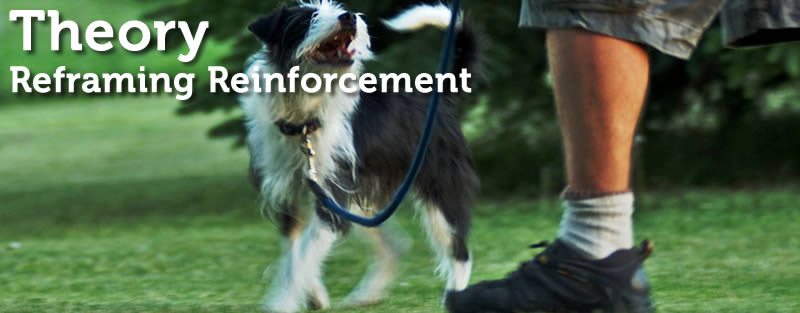
Reframing Reinforcement: Overpaid and Under-Reinforced
Reframing Reinforcement
For those of you who don’t know, I’m a bit of a word nerd.
Framing is a concept that is active in our daily communication and is a powerful tool for effective and meaningful communication. A “Frame” sets up the confines of understanding. Simply switching frames can lead to an entirely different understanding even though the situation or the topic at hand remains unchanged.
When it comes to positive dog training, the dominant understanding, the frame that we all tend to use is “Payment” or “Reward”.
Now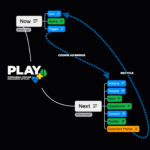 The Now Phase is an integral part of the Play Cycle in the Play+ training philosophy. It embodies the current, immediate interaction between the handler and the dog, anchoring them in the present... More this might not seem important to you or it might seem perfectly fine – it’s cut and dried. “So, why should I care?” Let’s take a look at a few frames and see how they differ from each other.
The Now Phase is an integral part of the Play Cycle in the Play+ training philosophy. It embodies the current, immediate interaction between the handler and the dog, anchoring them in the present... More this might not seem important to you or it might seem perfectly fine – it’s cut and dried. “So, why should I care?” Let’s take a look at a few frames and see how they differ from each other.
The Payment Frame
When we think of Reinforcement in terms of Payment there are a whole bunch of unconscious assumptions that are made. Payment is earned. Good work should be paid. Poor work should not be paid. Getting paid for doing shoddy work is not fair to the boss. Handlers feel cheated, or feel as if the dog is out partying on our dime after crappy work.
The Reward Frame
When we think of Rewarding a dog, we think of earning a prize for good work or a good deed. Rewarding half assed behavior or rewarding a decision that was not made for the appropriate reason defeats the power of the reward. Giving the reward away doesn’t do much as far as teaching a lesson.
The Reinforcement Frame
The Reinforcement Frame says that if a behavior is not happening, then not enough value has been added to the behavior. So when the behavior isn’t happening, you need to add more value to it. Value is added by either paying or rewarding the behavior when it happens or by shaping the behavior (or an incompatible behavior).
See how the Reinforcement frame is directly at odds with the Payment and Reward frames? Reward and Payment demand that a dog that is not performing well needs to do more to earn reinforcement. To pay or reward a dog for a weak or poor expression of a behavior sends the wrong message. It leads to poor performance in the future. But the Reinforcement frame says that if a behavior isn’t happening then value must be added through more Reinforcement. This conundrum plagues positive dog trainers all the time and gets in the way of rapid learning and effective training. Falling into the Reinforcement frame can be a gift.
The Reframe in Practice
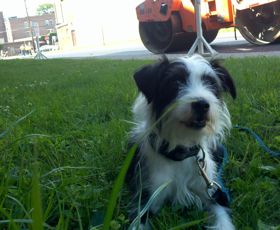 I learned this lesson not too long ago with Hops. Focusing on Paying and Rewarding this little Jack Russell Terrorist for good work meant that I never get to reinforce anything. It just wasn’t working.
I learned this lesson not too long ago with Hops. Focusing on Paying and Rewarding this little Jack Russell Terrorist for good work meant that I never get to reinforce anything. It just wasn’t working.
After banging my head up against the wall and racking my brain it hit me: his behavior didn’t need to be paid or rewarded – it couldn’t because it wasn’t happening 🙂 – it needed to be Reinforced. Once I reframed that understanding Hops started to come around and we started to make progress.
It’s important to note that I didn’t necessarily reduce my criteria for success, although my criteria did drop, nor did I work to increase my rate of reinforcement, although the CPM CPM means cookies per minute. It is a fun expression for rate of reinforcement, a very important dog training concept. CPM should be between 15 to 30 CPM when learning or adding value... More (cookies per minute) certainly did increase, I simply reframed my understanding from Paying and Rewarding to Reinforcing behavior.
CPM means cookies per minute. It is a fun expression for rate of reinforcement, a very important dog training concept. CPM should be between 15 to 30 CPM when learning or adding value... More (cookies per minute) certainly did increase, I simply reframed my understanding from Paying and Rewarding to Reinforcing behavior.
To the uninitiated or those stuck in the Payment and Reward frames this looks like giving cookies away, and in many respects it is – cookies flow freely – but something near magical happens – the behavior I am looking for gets reinforced and the behaviors I am wanting not to happen don’t happen. Once the behavior that I am looking for gets enough value, the dog, as if by magic, starts to do it.
Those tough value judgements like, “He’s only doing it because of the cookie,” and those training questions, ”Was that good enough to reinforce?” disappear, and what we are left with is pure Reinforcement – value being added to the behavior(s) that we’re looking for.
Stepping out of the Payment and Reward frames and into the Reinforcement frame empowers the handler and helps the dog. Give The Give is a retrieve to the hand. A cued Give is a foundational skill that is not super useful in the actual performance of disc dog freestyle, and has huge applications for... More it a try. It works.
The Give is a retrieve to the hand. A cued Give is a foundational skill that is not super useful in the actual performance of disc dog freestyle, and has huge applications for... More it a try. It works.





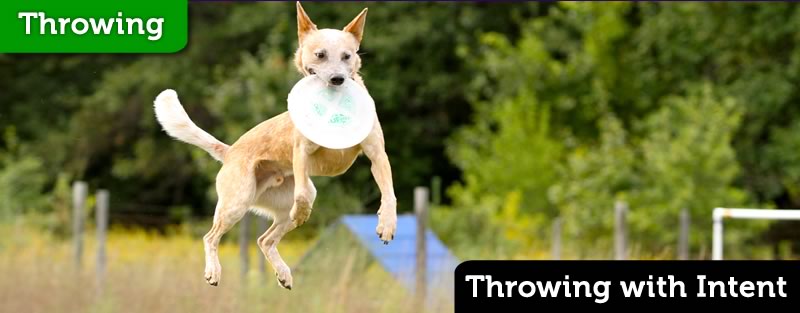
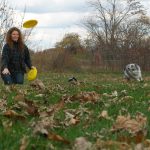


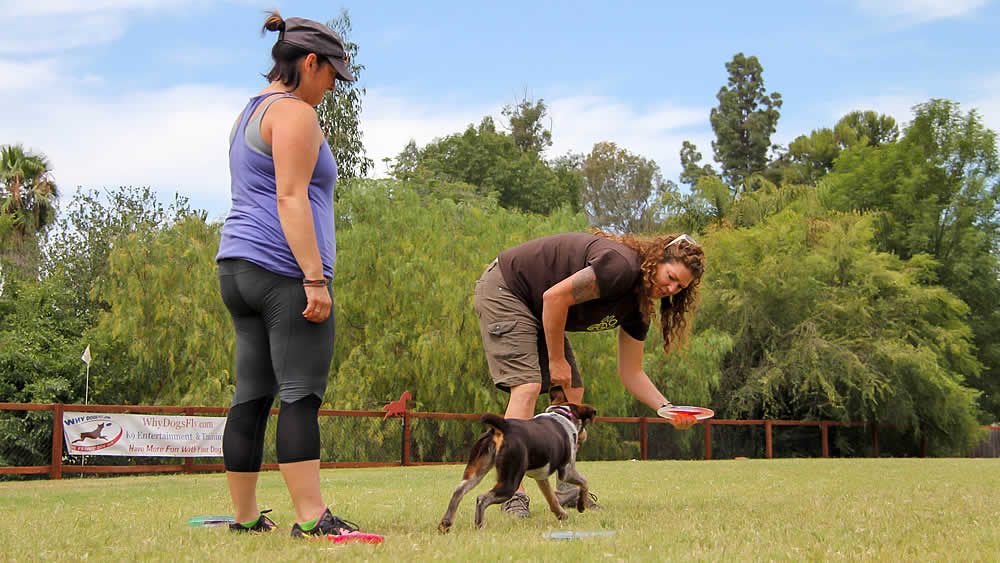
spot on!
Thanks Julie! It’s kind of a big deal, isn’t it?
Very good points! I sometimes struggle with that.
Me too, Anne!
It’s easier if you’re thinking about it, but sometimes it’s still hard to put into practice. The key is understanding it in the first place, that way when things are not going so well and you’re struggling or at your wits end you have a place to go back to.
Simple but not easy, right?
Miss you btw! How’s G-MoneY? 😉
Ron, so rather than paying or rewarding a “come” when the dog actually comes, you would reinforce the dog being around you, thus giving more value to being near you? Am I getting it…
Hey SALLY!
Miss you, Karen and Ransom!
That is one way of thinking about it… not quite what I’m getting at, although it certainly is applicable.
What I’m saying is that you need to be thinking in terms of reinforcement on that cued recall in the first place.
Why are you delivering that cookie, or throwing that ball? Is it because you are paying him for a good job? Rewarding him for making a good decision? Or is it because you want to make him more likely to come when called in the future?
Now, keep in mind that paying or rewarding him will most likely reinforce the behavior, but is reinforcement at the top of your mind when you pay him? What if he comes back slow? Or his recall has gotten to be quite lousy? Are you going to pay or reward that?
It’s easy to get frustrated (dog and handler) and/or have the behavior spiral into a battle of wills when you are stuck in that Reward or Payment frame.
But if you are in the reinforcement frame, it’s a simple matter of adding more value and working to ensure that the behavior is reinforced.
Another thing that thinking in terms of reinforcement does is force you to question thiscriteria things like your timing, whether your criteria is clear or whether or not your motivation is valued by the dog. Essentially it places a lot more focus on the handler and the training techniques employed instead of blaming the dog.
If the behavior were properly reinforced, the dog would be doing it.
Peace~
Very nice, such a true lesson and one difficult to teach or convey at times. And of course difficult to let our attachments about our own dogs (example: “she knows this…”) go so that higher rate of reinforcment can happen…..the flip side and one I would love to see you write about is when to begin rewarding for more tuned behavior…..so when to being to add critiria without lumping 😉
Good post Ron, great to see you writing again!!!
Mary
Thanks Mary!
We’ll see about that flip side. That is a LONG post… 😉
Yes Mary, me too… gosh such a fine line. So are you saying that the finer tuned, more immediate (running back to you like a bat outta hell) recall will naturally happen if the right amount of value has been placed (through reinforcement of the recall) on the handler?
That’s what I’m saying, Judy. Thanks for wrapping it up in a nice little package and serving up a softball.
Peace~
Yep and could we add….(for that other whole long post 😉
Once you have the “batt-outta-hell” run back on a recall reliably and in multiple enviroments you should begin to look for only that level of performance, less behavior does not get reinforced at a high level. (for example you recall the “batt-outta-hell dog” and they now go and sniff before turning back to run to you…no cookie and I would ask the dog to “try-again” to get it right!).
Again, the hard part about this is you must know this is where the value is for the dog and that this behavior is truly understood, generalized and known by the dog, otherwise you are adding negative punishment before adding enough positive reinforcment….such a fine line, but if you can navigate this one you will create awesome behavior!
Fun post Ron!!!!!
So would it be fair to say that early phases of teaching a new behavior lean heavily towards reinforcement but transition gradually towards reward as the behavior becomes perfected.
Also, are you going to run any disc dog clinics in upstate NY now that you have moved here? There is a fantastic BC rescue in Morris, NY (where I got 2 of my three dogs) who might be interested in hosting one.
Love your style!
That would be a fair assessment, John. Also when behaviors are falling apart it gives you a place to go to get them fixed.
We were going to do something up in Buffalo late summer, but we kind of dropped the ball on getting it together – life moves fast these days…
I’d love to get something together in Morris if we could. Give me a shout. Contact info is on the contact page.
I have been wanting to get in touch with you since moving here, so give me a shout.
Peace~
Great blog. I had to read it a few times to get in the right frame of mind, but I think I get it.
Dogs don’t share the same prefrontal cortex and therefore inhibition patterns that we do, so we don’t need to treat them like a human employee.
If a dog returns at break neck speed you can reward with another throw, but if they start lolly gagging, you can blow them off a bit? It starts to get a bit tricky when you already have a good behavior but are looking for more. You don’t want to blow the dog off long enough that it gets distracted or confused but you want to build enough drive to reward with another throw and a speedy return.
Thanks for doing what you.
Rich
Not quite, Rich.
I would start out by redirecting your prefrontal cortex comment to:
Just because we (humans) have a strong prefrontal cortex allowing us to deeply weigh decisions and have a good concept of time and join the two easily, doesn’t mean that is the only way to learn, or the only way we can teach.
Your question about punishing lolly gagging with blowing the dog off, while a useful and valid tactic, is missing the point that if you had reinforced the dog properly for the behaviors they are already performing and have performed – running back fast – you shouldn’t have a problem with lolly gagging that you need to punish in the first place. It’s almost a Koan. lol
We tend to immediately go to the punishment frame that your question alluded to for the instruction, or more appropriately, to get the behavior to happen, when a more efficient and healthy path would be creating a situation where the behavior is likely to happen and reinforcing the missing behaviors either on the spot or in a separate session.
On Dismissal and the Prefrontal Cortex
We are working much more base level behaviorism with dogs, and in most situations, I actually do want the dog to get distracted after dismissal and get lost. That way I can capture and shape interest in the handler and cultivate a value for the opportunity to work. I may or may not push the dismissal so far that the dog loses interest depending on the situation we are in, but even if it were to happen, there’s so much value added to them hooking back up with me a la DOC ( Dismiss – Observe – Capture ) that it’s not a big deal at all. I could also easily Recall the dog because of that value.
The thing is that if we’re capturing and reinforcing reorientation and attention and other good stuff as the resolution of Dismissal, then we don’t have that checking out problem in the first place. There’s that Koan again…
What we don’t want to do is to ineffectually Dismiss the dog, Dismiss the dog and look desperate, Dismiss the dog into a sausage factory, or to constantly be pulling them back to you after the Dismissal.
Dismiss – Observe – Capture allows you to capture and reinforce hooking up with you, making it more likely that it will happen in the future. It also makes the opportunity to work a valuable commodity, but it has to be done honestly and with intent.
Hope this makes sense.
Peace~
On a Practical Level
The cure for lolly gagging is not punishment with lame play, although you totally can do that at times. The real cure is to build value for moving fast.
In k9disc we can do this very easily because we can deliver reinforcement and simply make the moving fast behavior happen because of where and how we deliver the discs.
If my dog is lolly gagging, the first thing I’m going to do is to call the drop and reinforce with a bite on a disc on me. Adding value on the handler.
I am also going to call the drop and reinforce it with a throw to a spot 30 yards behind me, forcing the dog to haul butt right by me to get their reinforcement for dropping the disc.
These 2 things should make the moving fast behavior happen and should be highly reinforcing (providing the dog is not tired and seeking rest).
This is simply working the problem through the reinforcement frame. It’s not paying the drop, it’s liable to be a crappy drop – I don’t care about the drop – I’m using it to create and/or reinforce the moving fast behavior. I don’t really even care about moving fast, as it’s going to happen.
Is this where training stops? Not at all, but it sure is a great starting place or a great pick me up for a troublesome behavior.
Peace~